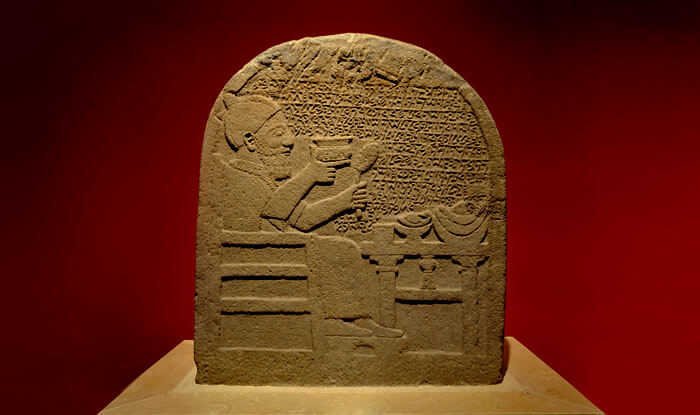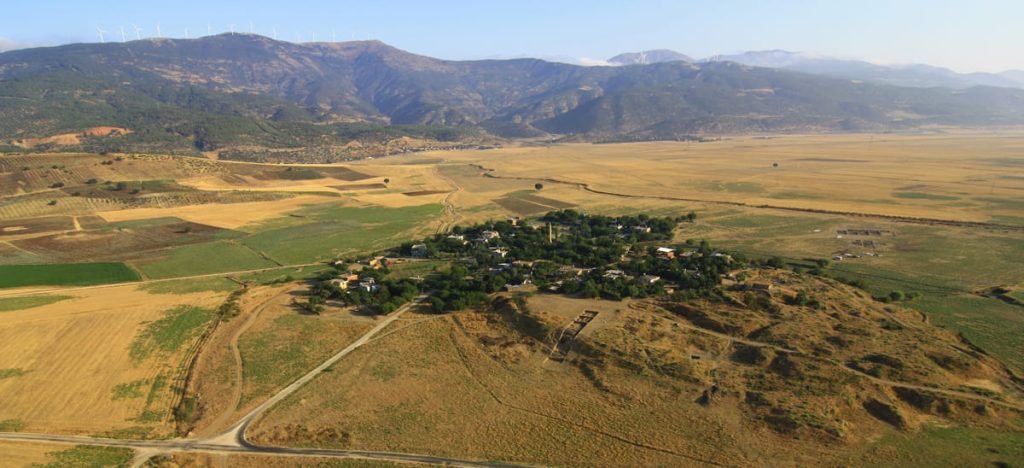
The first written evidence of the soul leaving the body in Anatolia: Kuttamuwa Stele
In the 8th century BC, a rich and powerful man named Kuttamuwa lived in the Gaziantep region of modern-day Turkey. Kuttamuwa served as a royal official.
The basalt Kuttamuwa Stele, which Kuttamuwa inscribed while he was alive, gives us information about the belief system of the time.
The inscription is written in Aramaic and Sam’al dialect and contains instructions for mourners after Kuttamuwa’s death.

The Kuttamuwa stele is an important work because it is the first written evidence that the people of the region believed that the soul and body were separate entities and that the soul migrated to another world.
It is also one of the oldest records of its kind in the world.
The inscription is one of the longest texts of the Sam’al dialect and has made significant contributions to the understanding of this dialect.

The 800-pound basalt stele, three feet high and two feet wide, was found by the Oriental Institute’s Neubauer Expedition during the third season of excavations at Zincirli.
Zincirli is located near the town of Islahiye in Gaziantep province. The area was once controlled by the Hittite Empire, later becoming the capital of a small independent kingdom.
The full text of the stele, which is one of the first references to the soul being a separate entity from the body in Near Eastern culture, is as follows:
“I am KTMW, servant of Panamuwa, who commissioned for myself (this) stele while still living. I placed it in my eternal chamber and established a feast (at) this chamber: a bull for Hadad Qarpatalli, a ram for NGD/R ṢWD/RN, a ram for Šamš, a ram for Hadad of the Vineyards, a ram for Kubaba, and a ram for my “soul” (NBŠ) that (will be) in this stele. Henceforth, whoever of my sons or of the sons of anybody (else) should come into possession of this chamber, let him take from the best (produce) of this vineyard (as) a (presentation)-offering year by year. He is also to perform the slaughter (prescribed above) in (proximity to) my “soul” and is to apportion for me a leg-cut.”
Discovered in 2000, the Kuttamuwa stele is on display at the Gaziantep Archaeological Museum.
You may also like
- A 1700-year-old statue of Pan unearthed during the excavations at Polyeuktos in İstanbul
- The granary was found in the ancient city of Sebaste, founded by the first Roman emperor Augustus
- Donalar Kale Kapı Rock Tomb or Donalar Rock Tomb
- Theater emerges as works continue in ancient city of Perinthos
- Urartian King Argishti’s bronze shield revealed the name of an unknown country
- The religious center of Lycia, the ancient city of Letoon
- Who were the Luwians?
- A new study brings a fresh perspective on the Anatolian origin of the Indo-European languages
- Perhaps the oldest thermal treatment center in the world, which has been in continuous use for 2000 years -Basilica Therma Roman Bath or King’s Daughter-
- The largest synagogue of the ancient world, located in the ancient city of Sardis, is being restored











Leave a Reply